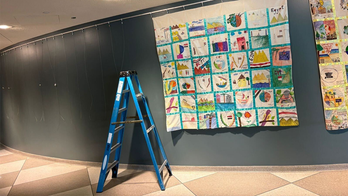Thousands of earthquakes have scientists watching for a volcanic eruption in Iceland
This weekend, Iceland experienced nearly 2,000 earthquakes within 48 hours. And they've kept coming since then – in swarms.
Scientists think all of this seismic activity is indicative of magma moving closer to the surface in the country's southwestern peninsula and are predicting a volcanic eruption may happen within the next few days.
Saturday the entire coastal town of Grindavik was evacuated in preparation.
Diana Roman, a volcanologist at the Carnegie Institution for Science, says that the region is considered to be quite seismically active, so earthquakes happen there fairly regularly. Case in point: The area has seen 20,000 since late October.
But things intensified Friday.
"It picked up very strongly overnight," she says.
Most of these earthquakes have been too small for people to feel, but the biggest have reached a magnitude of 5.0, which Roman says is large for the kinds of earthquakes seismologists usually see at volcanoes.
The quakes also been accompanied by ground deformation. The ground swells as magma forces its way through solid rock, shifting the land upwards in some places and downwards in others. Roman says this is typically too subtle for most people to notice.
"But in the past few days, it's actually been pretty intense," she says. "It's been, you know, up to a meter of the ground dropping in certain areas."
That's around three feet of change.
"The ground deformation is pointing to that magma being fairly shallow," she says. "About a kilometer from the surface or less. And what it means is that an eruption is very likely to happen fairly soon. We can't say when, whether it's the next hour, the next day, the next month."
She also says while there's a chance there is no eruption at all, it seems unlikely given how close to the surface the magma is estimated to be and given the size of the earthquakes.
Iceland is a particularly volcanic region. The country has 32 volcanic systems and lies on divergent tectonic plates – ones that are moving away from each other. As they move, magma from the Earth's mantle comes up beneath those plates and fills in the space to create more crust.
Roman compares this process of ground deformation and of magma pushing towards the surface to silly putty.
"If you stretch that silly putty really slowly, it'll just kind of stretch out and you'll get a thin string," she says. "And so that might be, you know, a way to think about deformation. You're kind of just bending things. But if you pull that silly putty really quickly, it'll snap. And so that's an earthquake."
Got science to share? Email us at shortwave@npr.org.
Listen to Short Wave on Spotify, Apple Podcasts and Google Podcasts.
Today's episode was produced by Rachel Carlson. It was edited by Rebecca Ramirez. Brit Hanson checked the facts. Maggie Luthar was the audio engineer.
Disclaimer: The copyright of this article belongs to the original author. Reposting this article is solely for the purpose of information dissemination and does not constitute any investment advice. If there is any infringement, please contact us immediately. We will make corrections or deletions as necessary. Thank you.







